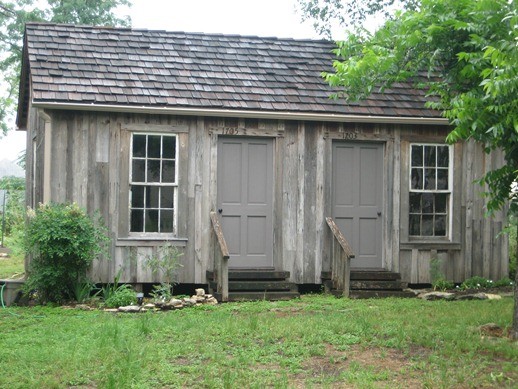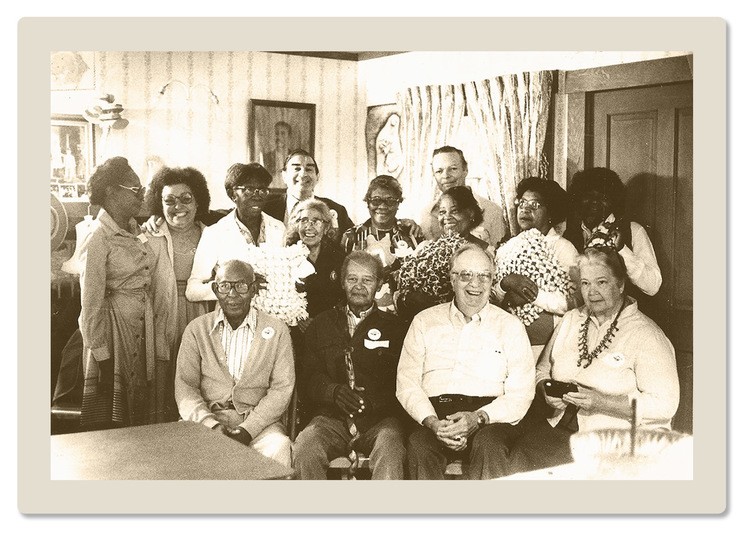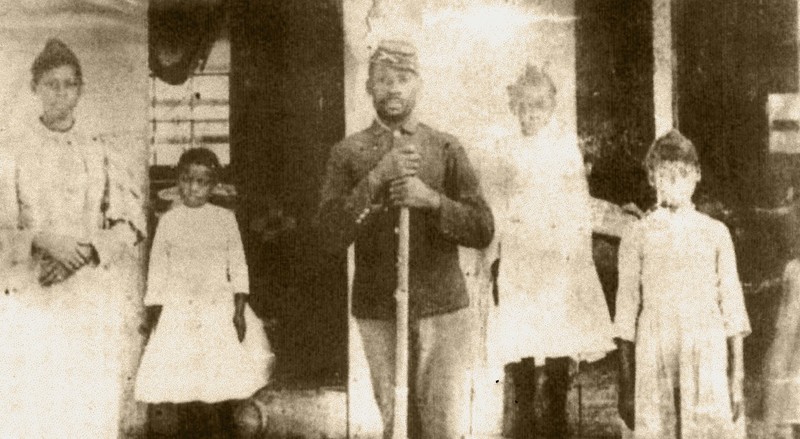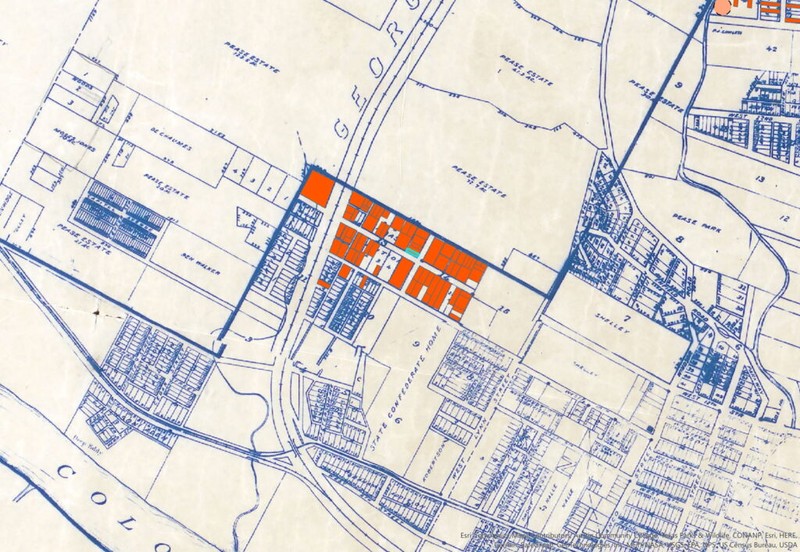Haskell House
Introduction
Text-to-speech Audio
Part of the historic Clarksville District in Austin, Haskell House serves as a repository of Clarksville history. The community was founded by African Americans in 1871, six years after the end of the Civil War. This home was owned by Union veteran Hezikiah Haskell. After Haskell's son passed away, the Haskell family deeded the house to the City of Austin for use as a community center and a place to preserve and interpret the history of the Clarksville community.
Images
Haskell House

This photo was taken during the 1980s when the Haskell House hosted a free meal program for seniors.

Hezikiah "Kye" Haskell served the Union army during the Civil War and was one of the army's "Buffalo Soldiers" assigned to a western cavalry unit.

An aerial blueprint of Clarksville, 1920

Backstory and Context
Text-to-speech Audio
The Haskell House is one of Clarksville's oldest and most significant historical buildings. Originally owned by the Smith family and later acquired by the Haskell family, the house served as a boarding house for many years and even hosted the Sweet Home Missionary Baptist Church before its completion. During the late 19th and early 20th century, Clarksville and the Haskell house were an oasis for African Americans who faced the indignity of segregation throughout the city of Austin. During the modern civil rights movement, residents and institutions throughout Clarksville worked to challenge segregation. Today, the house serves as a symbol of Clarksville's history and the efforts of former slaves who established the community.
Clarksville, founded in 1871 by Charles and Ann Clark, was a thriving freedman's settlement in West Austin. The community was self-sufficient, with residents farming, raising livestock, and establishing schools and churches. However, like most freedom colonies in Austin, Clarksville suffered greatly after the establishment of the 1928 plan and during the onset of The Great Depression. The plan proposed a highway that ran directly through the town center. Despite community efforts to resist this plan from being developed, the highway eventually was built, displacing most black families and businesses. The Great Depression only further exacerbated the deterioration of Clarksville, since many residents lost their jobs and homes due to bank failures and the rapid increase of unemployment.
Today, Clarksville is recognized as a historic district in Austin and is home to a diverse community that celebrates its culture. In recent years, the neighborhood has gone through many changes, and the rapid increase of new developments and rising property values threaten to once again displace long time residents and change the character of the community. To address this, there have been efforts to preserve affordable housing and protect the neighborhood's historic buildings and areas. Despite the challenges, the community remains a testament to the resilience and determination of its founders and its residents throughout history.
Those looking to explore the area can visit the historic Hotel Ella. Built in the early 1900s and recently renovated to preserve its historical significance while offering modern amenities, Hotel Ella serves as a perfect base for exploring the vibrant history of Clarksville and its oldest historical building, the Haskell House.
Thanks to the efforts of historic preservationists, local government agencies, and community members, the Haskell House serves as a reminder of Clarksville’s history and the efforts of former slaves who created the community.
Sources
"Hezikiah Haskell House." Clarksville Community Development Corporation. Accessed October 23, 2014. http://www.clarksvillecdc.org/historic-landmarks.
